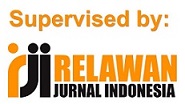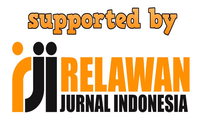A SOCIOLINGUISTIC STUDY OF GENDERED LANGUAGE IN JAMAICA KINCAID’S ‘GIRL’ USING SPEECH ACT THEORY AND DEFICIT MODEL
Abstract
Keywords
Full Text:
PDFReferences
Ahmed, S. (2017). Cultural Norms and the Linguistics of Gendered Power. Oxford: Oxford University Press.
Anderson, M. (2018). Gendered Language and Societal Roles: A Historical Perspective. London: Routledge.
Austin, J. L. (1962). How to do Things with Words. Oxford: Oxford University Press.
Brown, T. and Taylor, L. (2019). Gender, Language, and Power in Contemporary Communication. Cambridge: Cambridge University Press.
Carter, R. and Lee, J. (2021). Feminist Linguistics and the Politics of Reproductive Language. New York: Palgrave Macmillan.
Chen, S. (2024). Analysis of Jamaica Kincaid’s ‘Girl’ from the Perspective of Feminist Stylistics. E-Review of Literary Studies, 1(1), 97-100. Retrieved from http://www.aeph.press/esh/esh20241/83.html.
Delaney, P. and Hunter, A. (Eds.). (2019). The Edinburgh companion to the Short Story in English. Edinburgh: Edinburgh University Press.
Greenfield, A. (2018). Speech Patterns and Power Dynamics: A Gendered Perspective. The USA: SAGE Publications.
Jayasree, K. (2018). Linguistic-Literary Camouflage in Jamaica Kincaid’s ‘Girl.’ IUP Journal of English Studies, 13(2), 81–87. Retrieved from https://ssrn.com/abstract=3272762.
Johnson, H. (2020). The Intersection of Language, Culture, and Gender Norms. Switzerland: Springer.
Kanan, A. (2024). Examining Double Colonization and Subalternity in Jamaica Kincaid’s Girl through a Postcolonial Feminist Perspective. Akademik Journal of History and Idea, 11(1), 500-512. Retrieved from https://doi.org/10.46868/atdd.2024.668.
Kincaid, J. (1978). Girl: In At the Bottom of the River. New York: Farrar, Straus, and Giroux.
Kreishan, M., and Shoqairat, W. (2023). The Distorted Image of the Mother-Daughter Relationship in Alice Munro’s “Boys and Girls” and Jamaica Kincaid’s “Girl”. Interdisciplinary Literary Studies, 25(2), 176-195. Retrieved from https://www.researchgate.net/publication/368642270_The_Distorted_Image_of_the_MotherDaughter_Relationship_in_Alice_Munro%27s_Boys_and_Girls_and_Jamaica_Kincaid%27s_Girl.
Lakoff, R. (1975). Language and Woman’s Place. New York: Harper and Row.
Pratt, M. L. (1977). Toward A Speech Act Theory of Literary Discourse. Indiana: Indiana University Press.
Rashid, A.; Maratab, A.; and Rashid, U. (2024). A Feminist Critical Discourse Analysis of Jamaica Kincaid’s Girl. International Journal of Human and Society, 4(3), 725-730. Retrieved from https://ijhs.com.pk/index.php/IJHS/article/view/756.
Roseline, J. and Mohammed, Z. (2024). Examining Societal Expectations and Power Structures in Jamaica Kincaid’s “Girl” using Van Dijk’s Framework. European Journal of Arts, Humanities, and Social Sciences, 1(2), 113-127. Retrieved from https://doi.org/10.59324/ejahss.2024.1(2).11.
Searle, J. R. (1969). Speech Acts: An Essay in the Philosophy of Language. Cambridge: Cambridge University Press.
Smith, P. (2019). The Socio-Historical Roots of Gendered Speech Acts. Journal of Language and Society, 35(4), 456–472. Retrieved from https://www.researchgate.net/publication/28762393_Towards_a_history_of_speech_act_theory.
Tomasello, R. (2023). Linguistic Signs in Action: The Neuropragmatics of Speech Acts. Brain and language, 236, 105203. Retrieved from https://doi.org/10.1016/j.bandl.2022.105203.
DOI: https://doi.org/10.30743/ll.v9i1.10654
Refbacks
- There are currently no refbacks.
Fakultas Sastra
Universitas Islam Sumatera Utara (UISU), Medan
Jl. Sisingamangaraja Teladan Medan 20217
Telp. (061) 7869911, e-mail: language_literacy@sastra.uisu.ac.id









